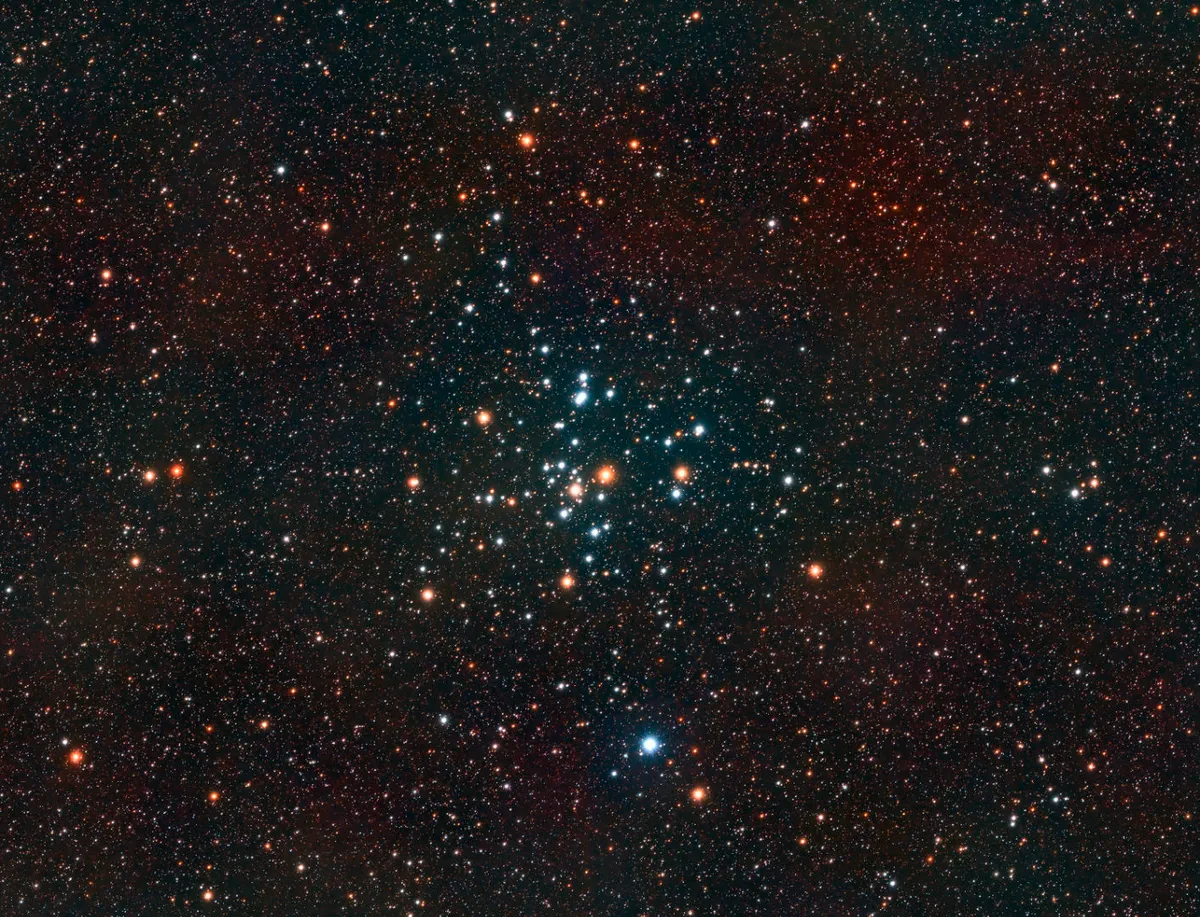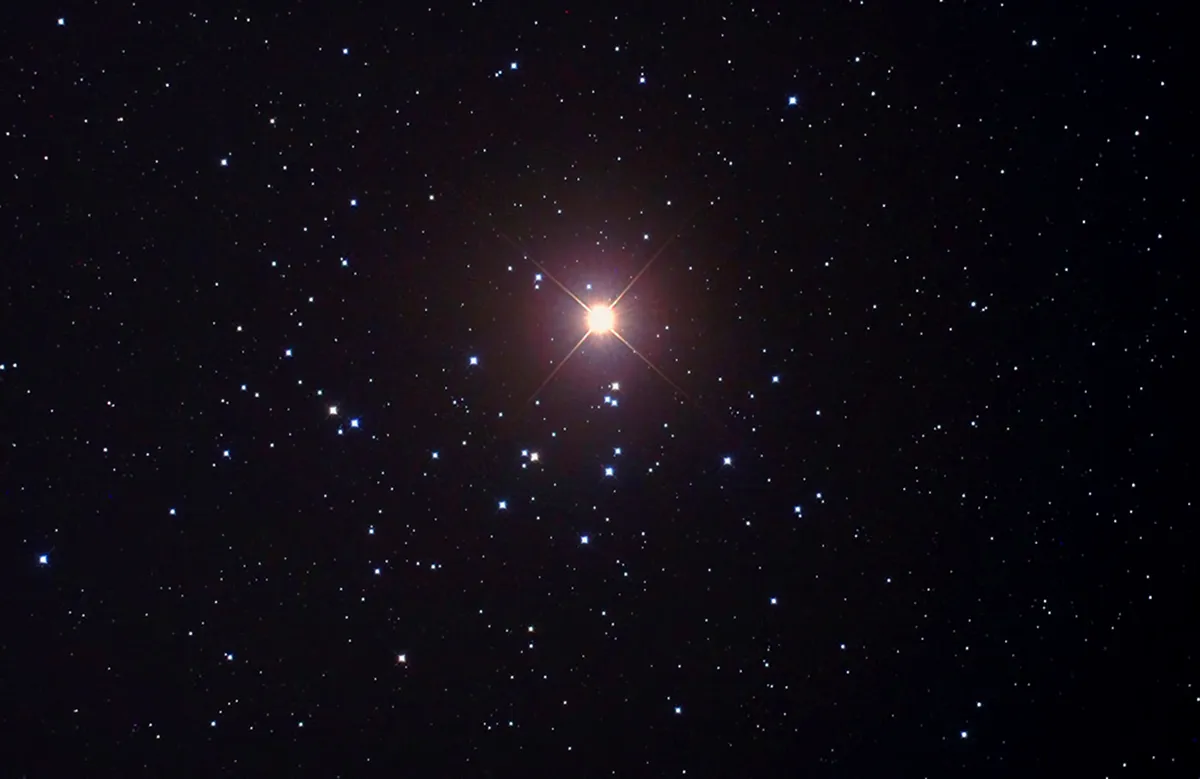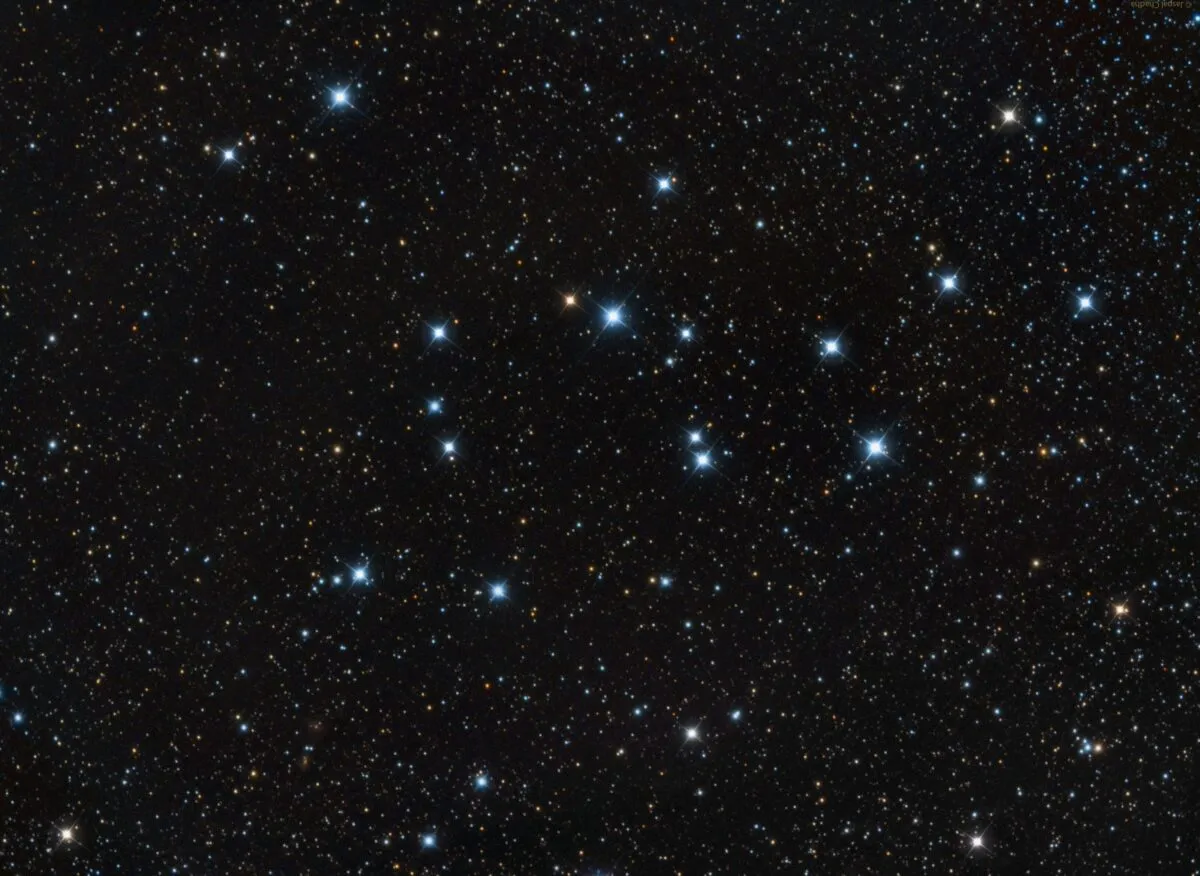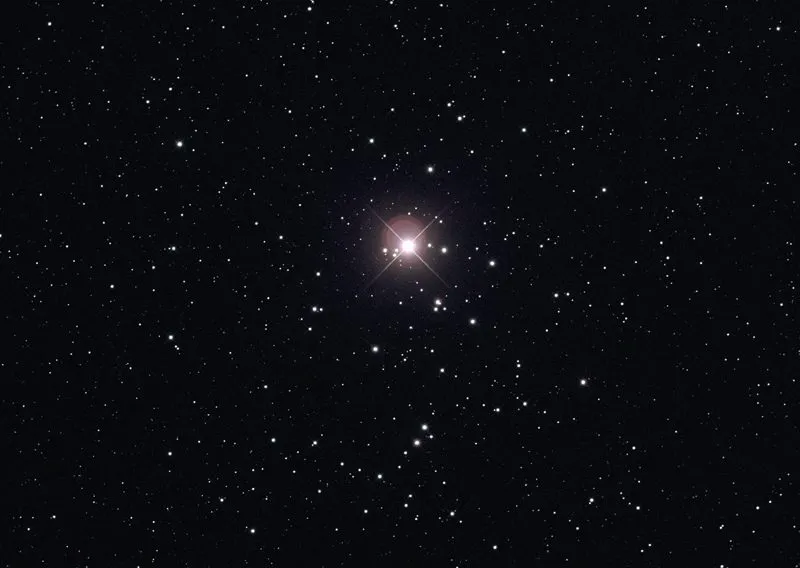The Beehive Cluster is an open star cluster located in the constellation Cancer, about 600 lightyears from Earth.
The cluster is also known as M44, its designation in the famous Messier Catalogue, or Praesepe.
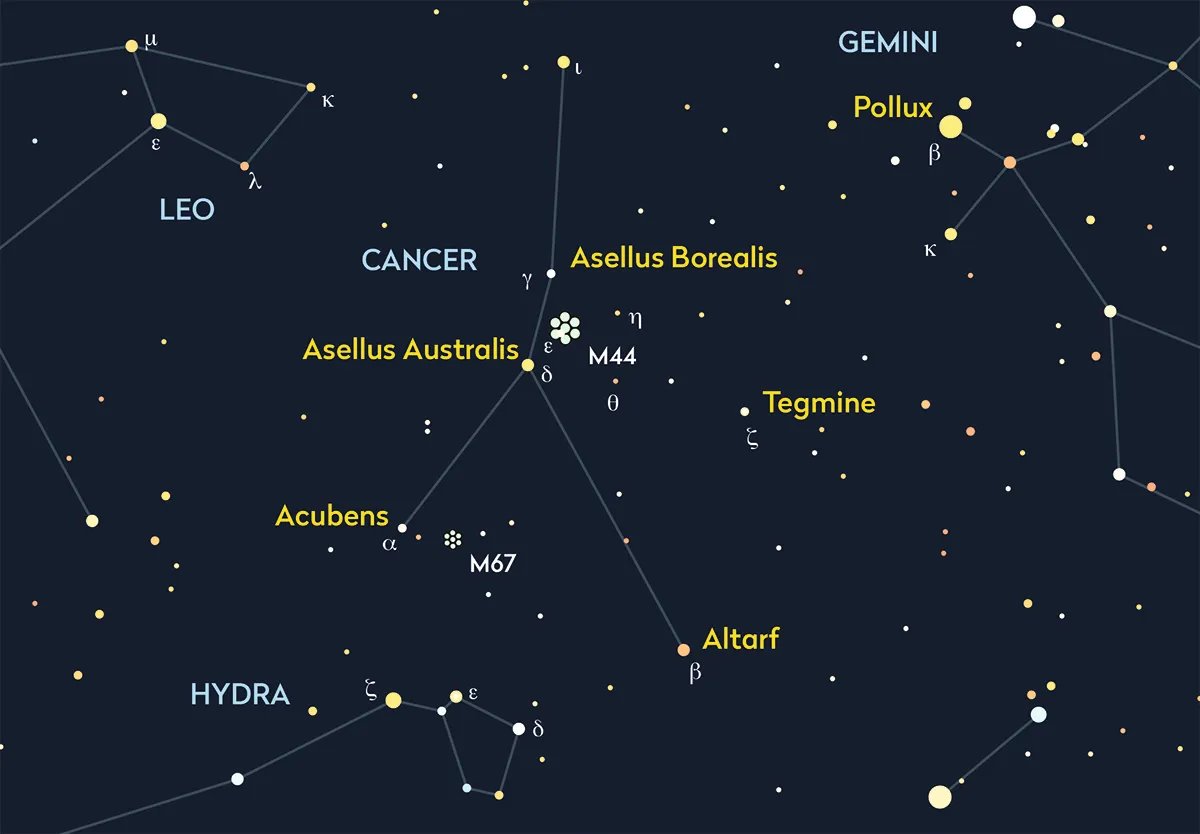
The Beehive Cluster is relatively young, estimated to be about 600 million years old, and is thought to host about 1,000 stars, covering an area about 15 lightyears wide.
It is one of the most well-known objects in the Messier Catalogue and can be seen with the naked eye under good conditions, making it a popular target for conjunctions with the Moon and panets.
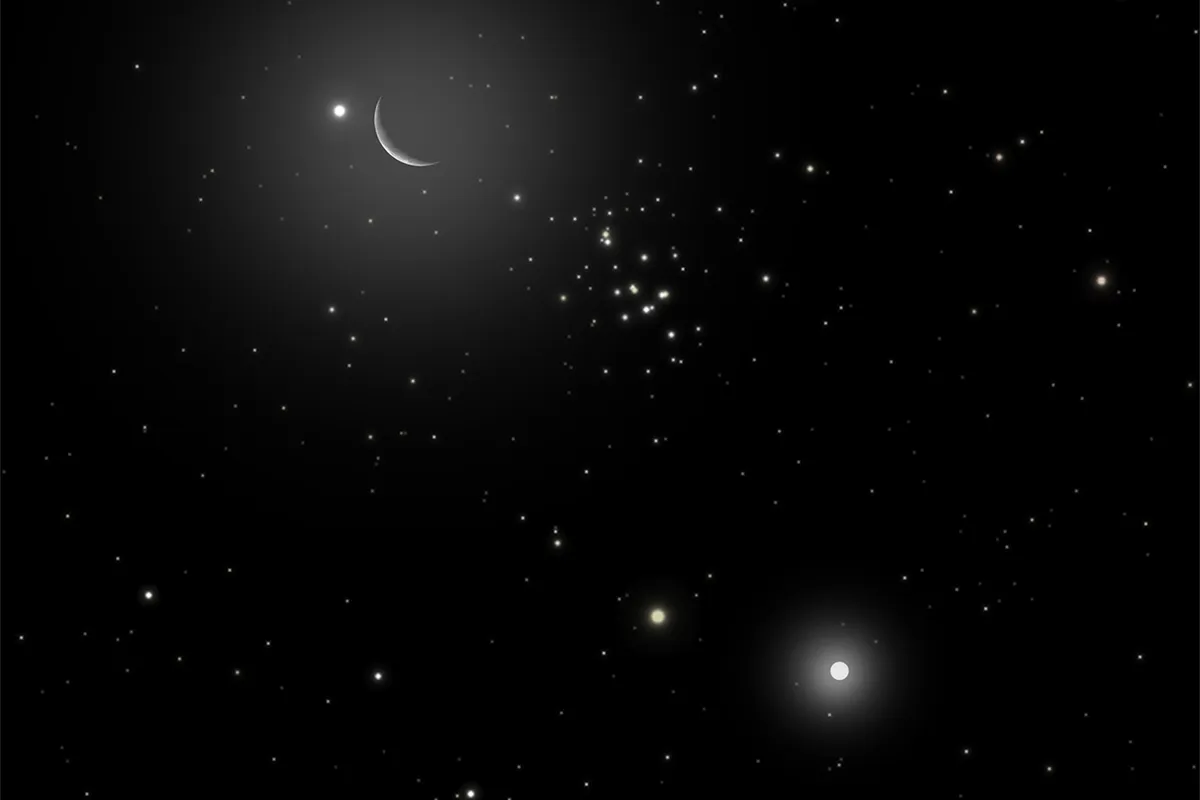
The Beehive Cluster is also noteworthy because in 2021, astronomers announced the discovery of two massive, hot exoplanets in orbit around two of its Sun-like stars, named Pr0201b and Pr0211b.
Since the first exoplanet discoveries in the 1990s, astronomers now estimate that for every star we can see in the night sky, there is likely at least one planet in orbit around it.

How to find the Beehive Cluster
The Beehive Cluster, M44, is a superb and easy target to hunt down.
Start at the Plough, on the side nearest the handle. Extend a line down towards the horizon for a distance twice the length of the Plough to find the bright star Regulus.
Next, find Orion. Extend a line from Orion’s lower-right star (Rigel) through its upper-right star (Betelgeuse) for twice that distance again to find Castor and Pollux.
Using binoculars, you’ll find M44 slightly below the mid-point of the line joining Castor to Regulus.

Beehive Cluster and the planets
The Beehive Cluster often appears close to planets like Mars and Venus, because the Beehive Cluster is located close to the ecliptic in the sky.
The ecliptic is an imaginary path that the Sun traces across our sky, and is effectively marking the plane of our disc-like Solar System.
For this reason, the planets all appear in Earth's sky roughly along the line of the ecliptic.
And if any deep-sky objects happen to be positioned on or near the ecliptic, they are likely to be visited by Solar System planets from time to time.
Of course, these meetings between the Beehive Cluster and planets like Mars and Venus are a matter of perspective, the Beehive Cluster being much further away from Earth than the planets.
Gallery: images of the Beehive Cluster
For astro imaging advice, read our guide on how to photograph the stars or our beginner's guide to astrophotography.
And don't forget to send us your images or share them with us via Facebook, Twitter and Instagram.

